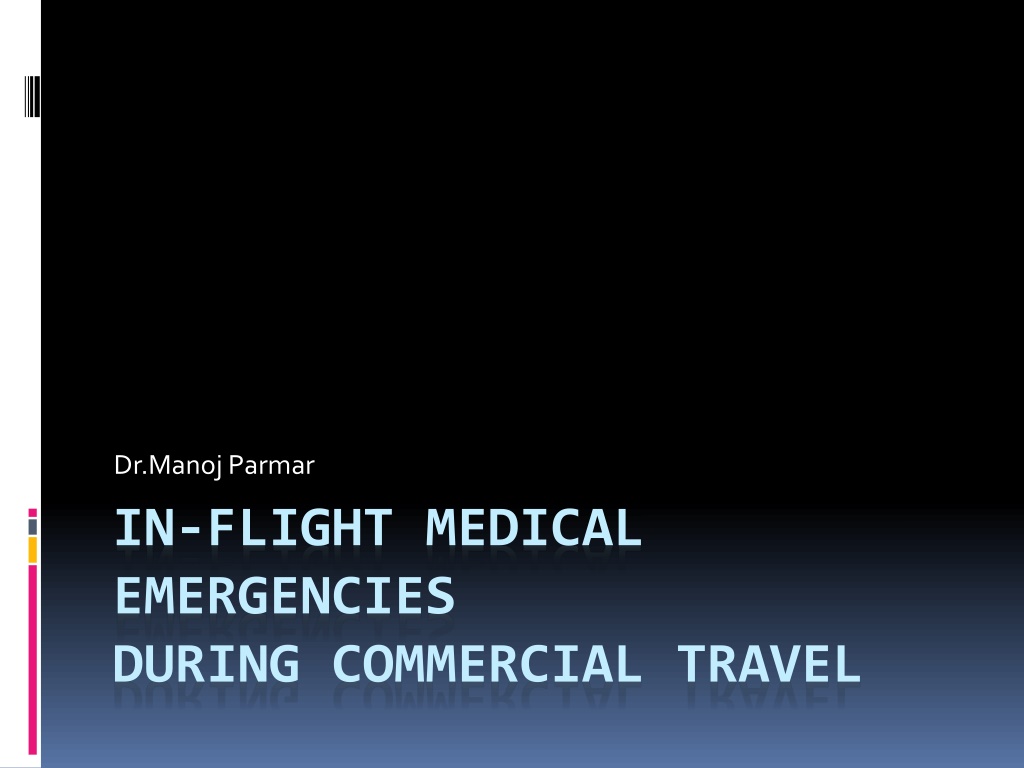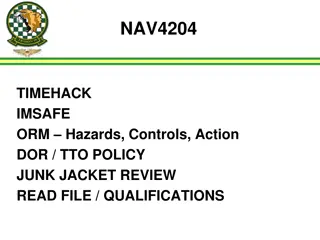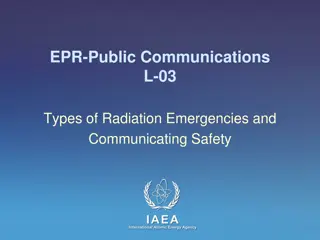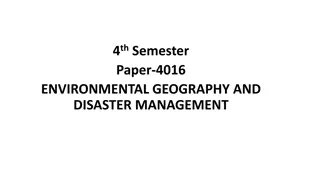IN-FLIGHT MEDICAL EMERGENCIES DURING COMMERCIAL TRAVEL
Physicians traveling may be called upon to assist passengers experiencing medical emergencies in commercial flights, revealing potential liabilities and legal ramifications. Explore common in-flight medical issues, liability risks, legal obligations, and resources available onboard.
Download Presentation

Please find below an Image/Link to download the presentation.
The content on the website is provided AS IS for your information and personal use only. It may not be sold, licensed, or shared on other websites without obtaining consent from the author.If you encounter any issues during the download, it is possible that the publisher has removed the file from their server.
You are allowed to download the files provided on this website for personal or commercial use, subject to the condition that they are used lawfully. All files are the property of their respective owners.
The content on the website is provided AS IS for your information and personal use only. It may not be sold, licensed, or shared on other websites without obtaining consent from the author.
E N D
Presentation Transcript
Dr.ManojParmar IN-FLIGHT MEDICAL EMERGENCIES DURING COMMERCIAL TRAVEL
Physicians who travel may be asked to render care to a passenger who is having a medical emergency during a commercial flight. A considerable proportion of passengers in whom medical issues develop during travel require hospitalization. Therefore, health care providers should understand which in-flight medical emergencies occur commonly as well as the roles the providers can play and the liabilities they may incur when offering assistance.
A study of a ground-based communications centerthat provides medical consultative service to airlines estimated that medical emergencies occur in 1 of every 604 flights. This is likely to be an underestimate, however, because uncomplicated issues are probably underreported
Legal Ramifications A physician who provides assistance creates a doctor patient relationship, with its attendant obligations and liability risk. Liability is generally determined under the law of the country in which the aircraft is registered, but the law of the country in which the incident occurs or in which the parties are citizens could arguably apply.
Although U.S. health care providers traveling on registered U.S. airlines have no legal obligation to assist in the event of a medical emergency, ethical obligations may prevail. In addition, many other countries, such as Australia and many in Europe, do impose a legal obligation to assist
Features of the Aviation Medical Assistance Act (AMAA) of 1998. Nable JV et al. N Engl J Med 2015;373:939-945.
On-Board Medical Resources Several resources are available to providers who respond to a medical emergency. The Federal Aviation Administration (FAA) mandates that United States based airlines carry first-aid kits that are stocked with basic supplies such as bandages and splints. At least one kit must contain the additional items listed in Table 1
Contents of In-Flight Emergency Medical Kits. Nable JV et al. N Engl J Med 2015;373:939-945.
Suggested General Response A suggested general approach to handling in flight medical emergencies is summarized in Table 3 It is important to first ascertain whether one is sufficiently capable to provide assistance (consumption of alcoholic beverages, for example, may make one unsuitable to render care)
Suggested Response to In-Flight Medical Emergencies. Nable JV et al. N Engl J Med 2015;373:939-945.
Specific Medical Conditions Cardiac Arrest quite rare, accounting for only 0.3% of such emergencies, yet it is responsible for 86% of in-flight events resulting in death During flight, most appropriate and probably only possible approach to the management of cardiac arrest is basic approach
Thus, recognition of cardiac arrest, compression- only CPR, and defibrillation with the use of an AED represent the interventions that the volunteer physician should consider applying If the patient is resuscitated, diversion and emergency landing are probably the most appropriate recommendations to be made to captain of the aircraft. When diversion is not immediately available, the volunteer physician should provide care and monitor the patient to the best of his or her abilities, given the medically austere environment
If a return of spontaneous circulation is not achieved within 20 to 30 minutes, it is appropriate to consider cessation of resuscitation efforts and pronouncement of death. The realities of cardiac-arrest outcome particularly in this austereenvironment providejustification for discontinuing treatment if the patient does not have a favorable response
Acute Coronary Syndromes Cardiac symptoms represent 8% of medical emergencies on commercial airliners; other manifestations of an acute coronary syndrome that may occur include syncope or presyncope (37% of in-flight medical emergencies), respiratory symptoms (12%), and cardiac arrest (0.3%)
During a commercial flight, the volunteer physician may have only the patient s history and physical examination to guide clinical decision making and subsequent advice to the captain of the aircraft
Stroke Acute stroke can manifest in various ways. Clinicians should consider this as a potential diagnosis in a passenger who has an abrupt onset of neurologic symptoms Although performing assessment is challenging in the confined environment of an aircraft, providers should evaluate patients for focal neurologic deficits. Suspected strokes account for approximately 2% of in-flight medical emergencies complete neurologic
Clinicians who suspect stroke in travelers with evidence of respiratory compromise should consider providing supplemental oxygen, because hypoxemia must be avoided to limit further injury to neural cells Because strokes can also be mimicked by hypoglycemia, the blood sugar level should be measured, if possible.
The standard in-flight emergency medical kit does not contain a glucometer, though some airlines carry one as part of an enhanced emergency medical kit. One possible solution when a glucometer is not provided in the medical kit is for health care providers to ask other passengers whether one of them has a glucometer they can borrow
Finally, the suspicion of an acute stroke should prompt the responding health care provider to recommend an expedited landing
Altered Mental Status The causes of altered mentation are myriad, and they represent a large number of in-flight medical emergencies. Seizures and postictal states, for example, account for 5.8% of aircraft emergencies, and complications from diabetes account for 1.6%
Because altered mental status may be the result of metabolic derangement, infection, vascular pathology, intoxication, trauma, hypoxemia, or another clinically significant cause, the clinician assisting such a passenger must keep a wide differential diagnosis in mind
Air travel may exacerbate underlying neurologic conditions. For example, seizure thresholds are potentially lowered by in-flight hypoxemia and perturbations in passengers circadian rhythms. Clinicians must assess for reversible causes of a patient s altered mentation. The blood sugar level should be determined, if possible Patients with hypoglycemia may be given oral carbohydrates (if the level of mentation is sufficient) or intravenous dextrose
Syncope Syncope and presyncope are relatively common medical events; in one study, these conditions accounted for 37.4% of all aircraft medical emergencies. Passenger aircraft cabins are pressurized by air pumped through the engines, which results in a relatively arid environment As such, many passengers are somewhat dehydrated
Decreased arterial oxygen tension also occurs in passengers when aircraft are at cruising altitudes. Altered eating patterns and fatigue from delayed flights may also contribute
A responding health care provider should measure the passenger s BP & pulse, because intravascular volume depletion or bradycardia can readily cause syncope or presyncope. The simple maneuver of laying the patient on the floor with the feet elevated may provide rapid relief. Patients with persistent hypotension may need intravenous fluids. The blood glucose level should be checked with a fingerstick device,if possible.
Syncope can be caused by many underlying medical conditions, some of which are potentially fatal. Risk stratification of these patients, rather than a focus on finding the actual cause, is crucial, particularly in this medically austere environment In the case of elderly passengers with serious cardiac disease, particularly those who have persistent symptoms or abnormal physical findings, the responding clinician should consider recommending a diversion because these patients are at increased risk for death
Trauma Trauma is a relatively common occurrence in flight. Injuries on commercial airlines, however, are usually minor, often resulting from blunt force trauma due to turbulence. Although these are often nonlethal injuries, clinicians should always consider patient specific factors, such as age, medical conditions, and use of anticoagulants
Most traumatic injuries can be assessed and treated with basic first aid. Cold compresses and analgesia can be offered. If a fracture or dislocation is suspected, the patient should be placed in a non weight-bearing position with appropriate splinting. Head trauma is typically minor, but a thorough history should be taken and a physical examination performed
Dyspnea Reduced oxygenation can put passengers at risk for exacerbations of underlying respiratory diseases. Indeed, an estimated 12% of in-flight medical emergencies involve a respiratory complaint For instance, acute exacerbations of chronic obstructive pulmonary disease are not uncommon. Furthermore, patients with pulmonary hypertension can have severe hypoxemia as a plane gains altitude.
Clinicians assisting passengers with dyspnea should consider providing supplemental oxygen. In fact, passengers with respiratory illnesses and a resting oxygen saturation lower than 92% at sea level are advised to fly with additional oxygen; permission to travel with additional oxygen can be arranged with the airline with advance notice.
Acute Infections If a potentially contagious disease is suspected, the clinician should make an effort to isolate the patient. Simply preventing movement of the patient around the cabin and relocating neighboring passengers can reduce the risk of transmission Isolation of body fluids should be adhered to when an acute infection is suspected; gloves are available in the medical kit
Finally, when a communicable disease is suspected, the volunteer clinician should have a discussion with both ground-based medical services and the flight crew about potential quarantine and government reporting requirements.
Psychiatric Emergencies Psychiatric issues constitute 3.5% of in-flight medical emergencies. Potential stressors include a lengthy check-in process, enhanced security measures, delayed flights, cramped cabins, and alcohol consumption. Acutely agitated passengers pose considerable safety concerns
When faced with a passenger who is having an acute psychiatric issue, clinicians must determine whether an organic cause, such as hypoglycemia, may be responsible. Because the medical kit does not contain sedatives, the use of improvised physical restraints might be necessary to ensure the safety of other passengers if attempts at deescalating the situation and calming the passenger are unsuccessful

 undefined
undefined































